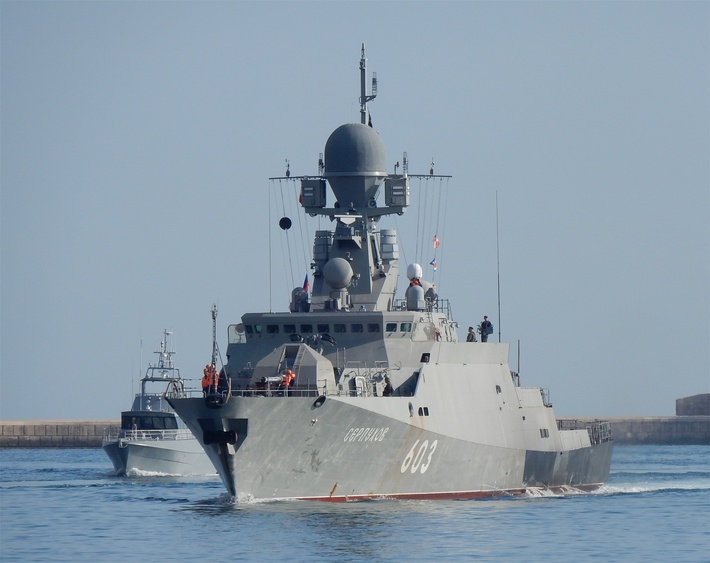>>
"Russia Develops Stealth Bomber T-60S"
- by Charles Smith
Russia is pursuing an aggressive program of weapons development that now includes the production of a new stealth bomber.
Described as smaller than the U.S. Air Force Northup B-2 Spirit stealth bomber, the Russian T-60S stealth bomber is being developed by Russian aircraft manufacturer Sukhoi, maker of the famed SU-27 Flanker fighter. The T-60S program reportedly uses a variable "swing" geometry wing and includes extensive stealth design features.
The move toward a stealth bomber is seen as an indication that President Validmir Putin intends to upgrade both the tactical and strategic weapons employed by Russia. The new stealth aircraft will allow the Russian air force to fight an advanced conventional war beyond the borders of Federation and compete directly with the U.S. Air Force.
The Russian air force decayed rapidly after the fall of the Soviet Union to approximately one half its original size. But the widespread impression of an under-funded and poorly manned air force in today’s Russia has been disputed by Russian generals who released video of advanced warplanes making precision strikes during the war against Chechen rebels.
"The Russians continue to invest heavily in advanced military technology," agreed Rep. Curt Weldon, a senior member of the House National Security Committee.
Weldon estimated that "over a billion dollars" of U.S. funding has been diverted by the Russian military into new weapons programs. According to Weldon, Russia is now fielding "state-of-the-art" weapons and some Russian technology is "superior" to U.S. systems.
"The Russian military continues to lead the world with the best weapons," noted Weldon. "The Russian government continues to invest heavily in advanced military technology. The Russian military investment also includes money from the United States, profits from sales to our military like the Sunburn and Ma-31 missiles, and from other funds such as Nunn Lungar and military to military contacts."
The Russian stealth program may have been assisted by the recovery and sale of a shot-down U.S. Air Force F-117A stealth fighter during the 1999 war against Serbia. Serbs reportedly sold the remains of the American stealth aircraft directly to the Russians.
However, the Russian stealth program has been ongoing for several years. In 1995, then commander of the Russian air force, Col. Gen. Peter Deinekin, stated that a new "multi-role strategic bomber" would replace the aging Tupolev TU-22 Blinder medium-range bomber and the Sukhoi SU-24 Fencer swing-wing fighter bomber.
Russian fighter maker Sukhoi is using the S-37 Berkut or "Golden Eagle" test-bed aircraft to prototype technologies for the next generation of Russian aircraft, including the new stealth bomber.
The Sukhoi S-37 features forward-swept wings that provide improved aerodynamics at subsonic speeds and at high angles of attack. The S-37 forward-swept wings are also unstable in flight, requiring high-speed computer controls. Stealth aircraft are notably difficult to control because the radar evading aircraft are also unstable in flight.
Recent upgrades in Russian flight control software and computers derived from the S-37 Berkut provided the Sukhoi design bureau with adequate "fly by wire" control experience to apply on the new stealth bomber project. The S-37 also makes extensive use of composite materials similar to radar-absorbing materials used by the U.S. Air Force.
Russia is deploying a wide range of fifth-generation weapons. The new stealth bomber development program is under way just as Russia is also deploying the SS-27 Topol M ballistic missile.
The Topol M is considered to be the most advanced mobile missile in the world. According to the Russian military, the SS-27 is equipped with a maneuvering warhead intended to defeat any U.S. anti-missile systems and has an explosive power of over a half million tons of TNT.
Other new weapons being developed or fielded by Russia include the new T-95 main battle tank, the MiG-35 advanced fighter and a lethal supersonic cruise missile, the 3M82 Moskit, NATO code-named SS-N-22 "Sunburn." The Raduga Moskit anti-ship missile is considered to be the most lethal anti-ship missile in the world.
Russian weapons are also being sold on the world market. The recent sale by Russia of the 3M82 Moskit anti-ship missile to China has drawn a response from Capitol Hill.
Rep. Dana Rohrabacher, R-Calif., has submitted a bill designed to halt the Russian missile sales to China, called the "Russian Anti-Ship Missile Nonproliferation Act."
The proposed House legislation, a copy of which was obtained by WorldNetDaily, contains previously unreleased information about the new strategic partnership between Russia and China. The bill notes that the Chinese Moskit missile could be armed with a "200 kiloton" Russian-made nuclear warhead. According to the bill, the first of two Russian-built Sovermenny-class destroyers sold to China arrived in the Taiwan Strait was manned by a "mixed Russian and Chinese naval crew."
The new legislation aims to "prohibit the forgiveness or rescheduling" of any bilateral debt owed by the Russian Federation unless the Sunburn missile sales to China cease. The bill requires that Russia terminate "all sales and transfers of Moskit anti-ship missiles that endanger United States national security" before rescheduling billions in national debt.
The Russian missile legislation has cleared a House committee vote and is now headed to the House for a general vote. The bill received bi-partisan support in the House Committee on International Relations, and it is expected to pass by a wide margin in the House of Representatives.











